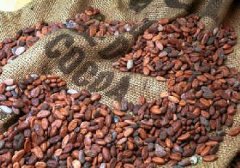Coffee Culture Coffee City walks into the "Soviet Cafe"
I have seen red "Soviet Cafe" signs in Moscow and many other Russian cities. This arouses my curiosity. What I want to know is the word "Soviet Union".

In Alexandrov, I walked into a Soviet cafe. The lights in the room are not very bright. On the right is a map of the Soviet country, and on the left is the "We lived like this" banner. Under the banner are several pictures of Soviet buildings, crowds and flowers. These photos alone can hardly explain how people here used to live. What impressed me most was the layout on the opposite wall: under the banner "the rest of the world unite", the national emblems of the 15 republics of that year were arranged, and the left and right sides marked "Soviet festivals". This is like a billboard. What does it advertise?
In the Soviet era, one of the biggest slogans, or the biggest signboard, was "the proletarians of the world unite", but now what is here is "the rest of the world unite". At the moment, I was confused about the intention of the owner of the cafe to use the "Soviet Union" as a signboard. I ordered a menu with a lot of food on it, and it was quite tempting. I ordered it twice, but the waiter said no. I had to ask, "what do you have?" There are only a few kinds of ice cream and pie. I can't help thinking that it's a bit like the Soviet Union that once existed. What the Soviet Union preached at that time was that it was the happiest country in the world and that people's standard of living was unparalleled. The material supply is the most abundant in the world. But actually? Only limited supply, limited affluence, limited brilliance. Many substantive things, from the menu in front of me, can be seen, but not ordered.
When I walked out of this small shop, I suddenly found a large white stone on the wall of the gate, engraved with the following lines: the 20th century Oceania once occupied the earth's 1max 4, and then disappeared into the abyss of history. In its 70 years of existence, the whole of mankind has more than once shuddered and high-fived this omnipotent power. This is a country of dictators and commanders, a country with great culture and science. A country that conquered fascism and opened the way to the universe. There can be different views on history: it can be remembered and respected forever, or it can be forgotten and hated, but this country is after all the motherland for generations, and its name is the Soviet Union. "
The intentions of the stone carvings are equally ambiguous: praise and condemnation are intertwined. This may typically reflect the true mentality and view of Russians on the disintegration of the Soviet Union and the Soviet Union: nostalgia for the past is lingering with regret and loss for the loss of military power and former hegemony. I think it is a very important starting point to attach importance to the views of the Russians on the issue of the disintegration of the Soviet Union. Different people may have different views, but we must not think that we should return to the "socialist society" of the Soviet Union as soon as we mention the military strength of the Soviet Union and the name of Stalin in Russia.
A Russian said very interesting: "We are very realistic, the Soviet Union disintegrated, we do not have so much burden, we can better develop the Russian country." It is of little practical significance to ask us the question of whether the disintegration of the Soviet Union is a good thing or a matter of concern. " This is quite a remark, but it is worth remembering.
Important Notice :
前街咖啡 FrontStreet Coffee has moved to new addredd:
FrontStreet Coffee Address: 315,Donghua East Road,GuangZhou
Tel:020 38364473
- Prev

It is Italian culture that Italian people drink coffee standing up.
Italians love coffee, so cafes are springing up everywhere. But you may not know that authentic Italian coffee is drunk standing up. It turns out that Italy is narrow and densely populated, with an inch of land and gold. If so many cafes were seated, it would not only occupy an area of land but also cost money. So they chose to drink it standing up. Anyway, the authentic Italian steamed coffee is very strong and refreshing, even if it stands for a while.
- Next

The cultural development of coffee the development process of coffee beans
Ethiopia used to chop up coffee fruits and use oil to crush them into balls and eat them as food. This practice spread to Arabia, where coffee seeds were chopped and boiled and spiced to become Cafe ala Sultana, the earliest coffee drink in history. Turkish coffee is brewed with an utensil similar to a spoon (Ibrik), a traditional method that allows deep-roasted coffee.
Related
- How did the Salvadoran coffee industry develop in Central America?
- What exactly does the golden cup extraction of coffee mean?
- The Origin of Coffee flower
- [2023 Starbucks World Earth Day] there are more meaningful things besides free Starbucks coffee!
- What kind of coffee is there in Spain? 9 Flavors of Spanish Coffee
- Aromatic African coffee| Kenya's coffee culture and historical production area
- Liberica Coffee Bean knowledge: the characteristics of Liberian Coffee beans of the three original species of Coffee beans
- The origin and formula of Spanish latte introduces the taste characteristics of Bombon coffee in Valencia, Spain.
- How to adjust the solution of over-extracted coffee
- What is the tasting period of coffee beans? What is the period of coffee and beans? How should coffee wake up and raise beans?

